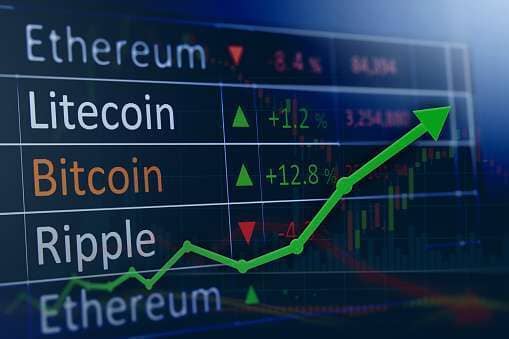Spot trading is the process of exchanging one cryptocurrency for another by placing an order in the order book. The orders are executed on the spot, using the asset’s price at https://xcritical.com/ the time of the transaction. Spot markets are popular among centralized cryptocurrency exchanges. Spot markets exist for all types of assets, from bonds to shares and beyond.
The asking prices are orders that are looking to sell the base currency. Therefore, when someone is trying to sell Bitcoin on the BTC/USD trading pair, the sell offers are referred to as asking prices. On the order book, the prices will be displayed in terms of the quote currency. Therefore, traders could place offers to buy 0.03BTC for $300, as an example. In layman’s terms, a cryptocurrency exchange is a place where you meet and exchange cryptocurrencies with another person. The exchange platform (i.e. Binance) acts as a middleman – it connects you with that other person .
What is the difference between spot trading in crypto and crypto CFDs?
Spot traders make money by buying cryptocurrencies at a specific time and selling them when prices increase. It’s important to note that you have not yet made profits or losses https://xcritical.com/blog/what-is-spot-trading-in-crypto-cfd-vs-spot/ from a crypto asset until you eventually sell it. Decentralised exchanges are platforms that allow you to access the spot crypto market without brokers or intermediaries.
You don’t have to take ownership or delivery of the assets, and you’ll benefit from real-time, continuous pricing that reflects the underlying market. Plus, you can open a position using just a small deposit , which can magnify your profits if your trade is successful. Spot trading and margin trading are two common ways of trading, not only in crypto markets, but also in other markets like stocks, forex, commodities, and bonds. The choice largely depends on a trader’s risk tolerance and personal circumstances.
Centralized Exchanges (CEXs)
Hence, you could consider the benefits of an OTC when spot trading large amounts of BTC. Besides spot trading on an exchange, one could opt for an over-the-counter OTC solution. Potential profit is low when trading spot markets as compared to trading margins or futures. The latter allows you to leverage capital and trade bigger positions.
Regulators Put the Squeeze on Crypto Trading, Volumes Plummet – Bitcoinist
Regulators Put the Squeeze on Crypto Trading, Volumes Plummet.
Posted: Thu, 08 Jun 2023 22:00:19 GMT [source]
Information is of a general nature only and does not consider your financial objectives, needs or personal circumstances. Important legal documents in relation to our products and services are available on our website. You should read and understand these documents before applying for any AxiTrader products or services and obtain independent professional advice as necessary.
(4)Futures vs. Spot prices
In addition, spot trading enables traders to use their cryptocurrency assets for additional functions like online payments or staking. Futures trading is a high risk, high profit activity, which is more suitable for experienced traders and investors. Above all, this is due to the possibility of using leverage, which allows opening much larger positions with borrowed funds. Thankfully, the risks of margin trading are to some extent covered by the mechanisms of protection and risk management, such as insurance funds.

However, decentralized platforms also come with their own downsides and security risks like exploitations via smart contracts. Blockchain transaction fees are also a strong point to consider in comparison with fees paid on centralized exchanges. Currently, both centralized and decentralized cryptocurrency trading platforms offer a wide range of types of trading. While beginning traders are usually advised to start with spot trading as a simpler and more straightforward option, the cryptocurrency derivatives market should not be overlooked.
Barron’s live coverage of financial markets, from stocks and bonds to oil and crypto.
A positive basis relationship means that the futures price trades higher than its spot price and vice versa. The basis may fluctuate because of changes in supply and demand, but due to the forces of arbitrage, it will eventually go to zero on the expiration day. A spot market is a financial market where you can buy and sell assets at spot prices, which reflect the underlying asset’s price.

So, let’s take a look at some of them and see what other trade options there are aside from the spot markets. Let’s say that you want to buy USDT tokens and have BTC in your account. You go to the spot market and see that the BTC-USDT rate is around $20,000.
Peer-to-peer (P2P)
The asset that is used to determine the price of another asset is called the quote currency. That’s because the base currency is quoted in terms of the second currency. As an example, Bitcoin can be quoted at a price of $10,000 for one Bitcoin. Since the price of Bitcoin is shown as 10,000 USD, US Dollars would be the quote currency. Relative Strength Index – a technical indicator that is used to calculate the speed of the asset’s price changes. It measures the price movements using oscillations on a scale of 1 to 100.
- Quarterly futures run on a calendar cycle and expire once the period is over.
- Learn the best cryptocurrency trading strategies and how to use them in this descriptive guide.
- Each investor has a different risk-return profile, and given the highly volatile cryptocurrency market, one should weigh the pros and cons of the trading strategy of their choice.
- As opposed to the exchange-based market, OTC spot markets are privately held and subject to less regulation.
- Learn everything about crypto crash and top 10 reasons behind it, in this descriptive guide.
- The asset that is used to determine the price of another asset is called the quote currency.
Allows margin requirement offsets for positions in opposite directions (e.g., long vs short) and across different product types (e.g., spot margin and futures). The biggest advantage of margin trading is that using leverage has the potential of amplifying positive returns. Let’s take a look at an example of a trader who bought $1,000 worth of Ethereum at a price of $1,000 (i.e., they bought 1 ETH), and subsequently, the price rose 10% to $1,100.